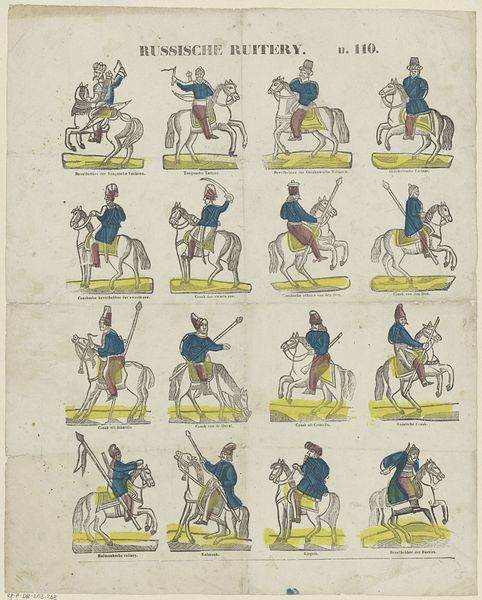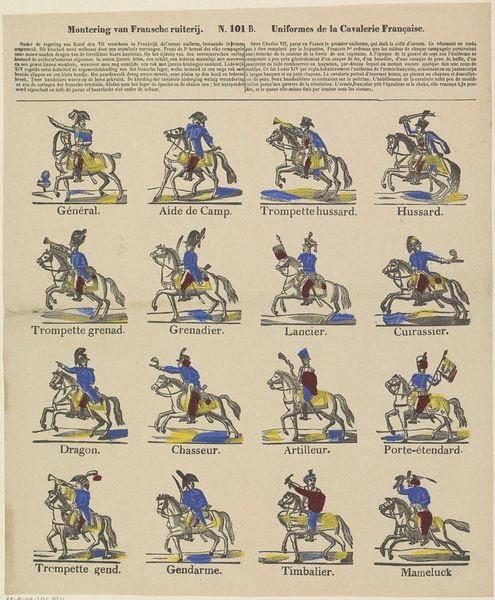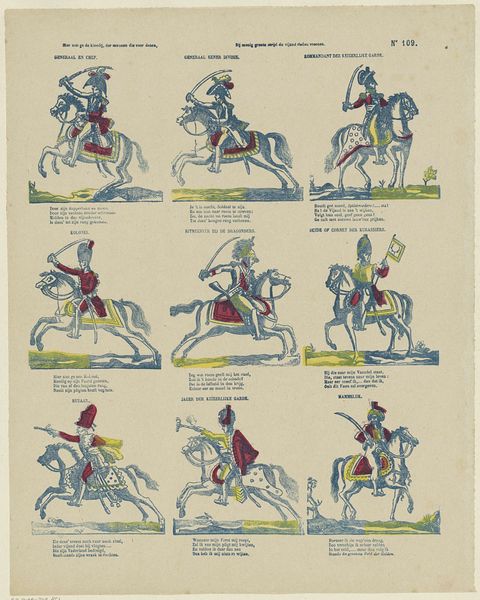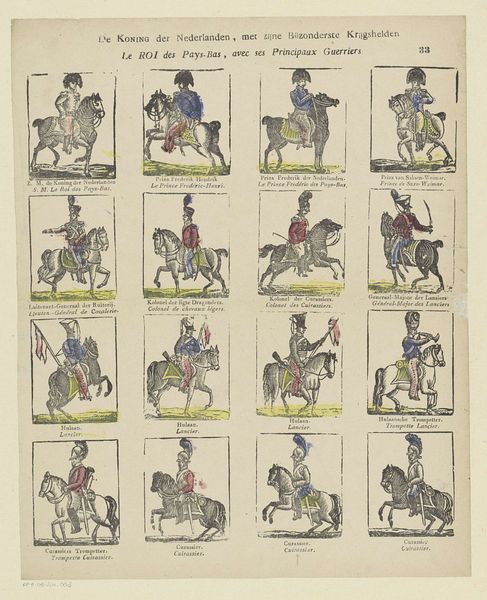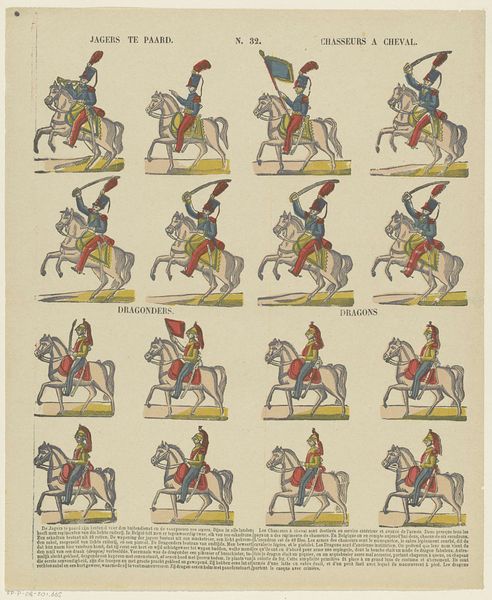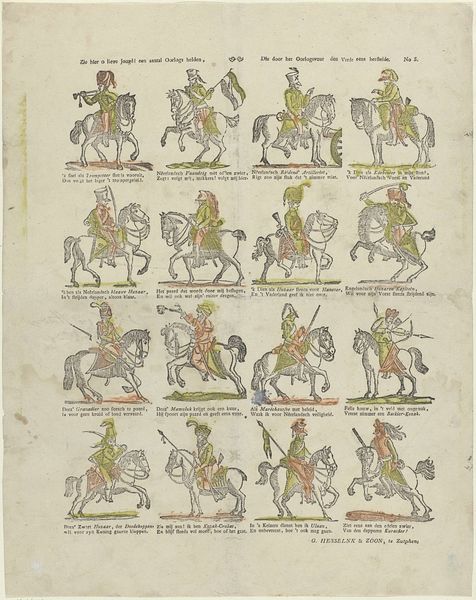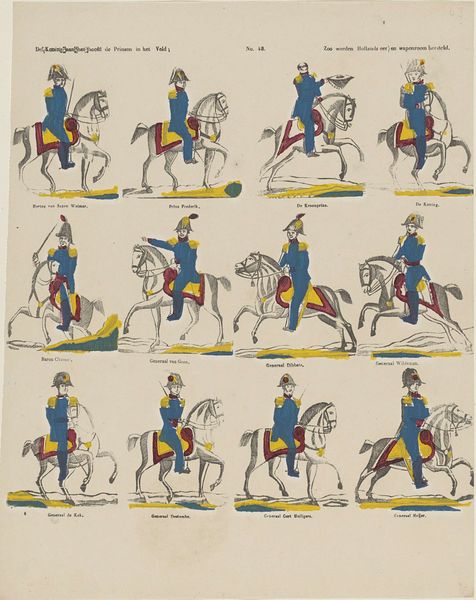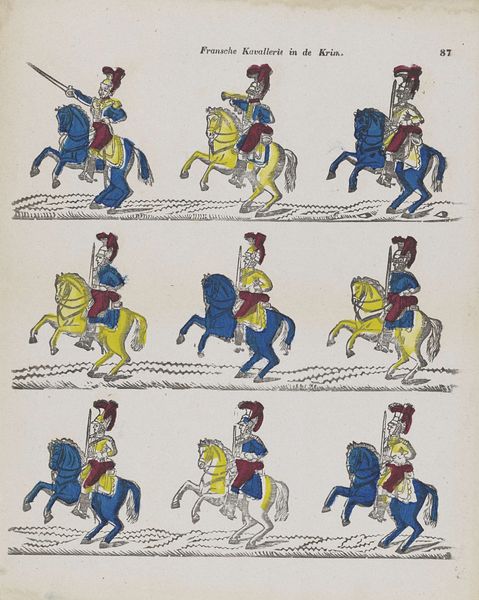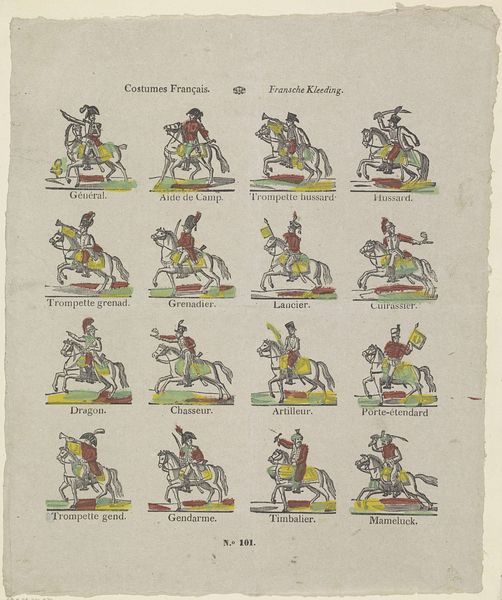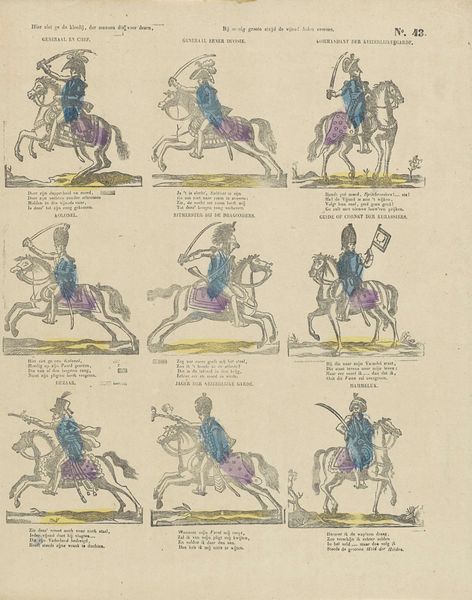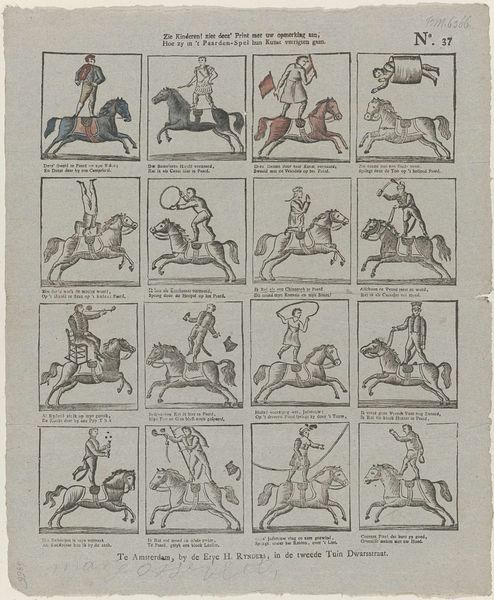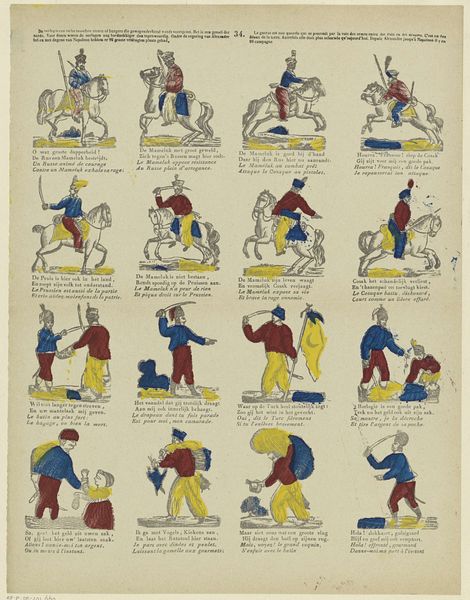
Voor vorst en vaderland waagt deze heldenstoet, / Komt het op vechten aan, hun welvaart en hun bloed 1827 - 1894
0:00
0:00
mhemeleersvanhouter
Rijksmuseum
print, engraving
#
narrative-art
# print
#
genre-painting
#
history-painting
#
academic-art
#
engraving
Dimensions: height 378 mm, width 320 mm
Copyright: Rijks Museum: Open Domain
Curator: M. Hemeleers-van Houter created this engraving entitled "Voor vorst en vaderland waagt deze heldenstoet, / Komt het op vechten aan, hun welvaart en hun bloed" sometime between 1827 and 1894. Editor: Oh wow, look at these toy soldiers, all lined up! It’s like a page torn from a very serious, but also sort of whimsical, catalogue. There's something so playful about them despite the rigid poses. Curator: Yes, exactly! Consider the sociopolitical context in which this print emerged. In the Netherlands, this imagery reinforced nationalistic sentiments, particularly the ideals of duty and sacrifice for both the monarch and the homeland, "vorst en vaderland." Think about what these values were meant to uphold in terms of identity. Editor: Hmm, right, the rhetoric of sacrifice is pretty potent. Each little figure on horseback embodies this almost romanticized version of military service. It reminds me of the theatre - staged bravery and honor all in a neat, repeating grid. Curator: Absolutely. The grid format isn't accidental, because it presents military service as systematic, orderly, and almost inevitable. What does this suggest regarding concepts like free will? This "genre painting", if we can call it that, feeds into the history painting tradition but renders it at an accessible scale, for whom do you imagine? Editor: You know, despite the noble subject matter, it evokes a sense of childhood – like building block soldiers with rules that can change mid-game, even. The little blocks they stand on almost amplify that feel. Curator: These nuances allow us to consider what kind of a message this might send across diverse societal strata. It seems both like patriotic propaganda and an oddly aesthetic depiction of militaristic values. It's history reflected through a child's eyes, idealized but within a structured frame, it doesn't escape a more complex cultural reading. Editor: Well, seeing this print makes me consider the art of visual simplification. To convey ideas like patriotism through simple lines and shapes. To capture grandeur while actually presenting us with tiny figures on horses. It's like, how little do we really need to feel a sense of great historic moments? Curator: It’s a compact expression with enduring cultural value, revealing much about the era's ideological leanings and artistic methodologies. Editor: An artifact that really reminds us that the stories we tell ourselves and to each other often show the times.
Comments
No comments
Be the first to comment and join the conversation on the ultimate creative platform.
